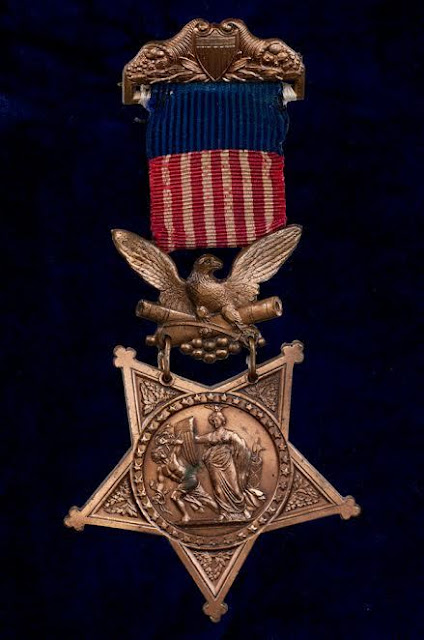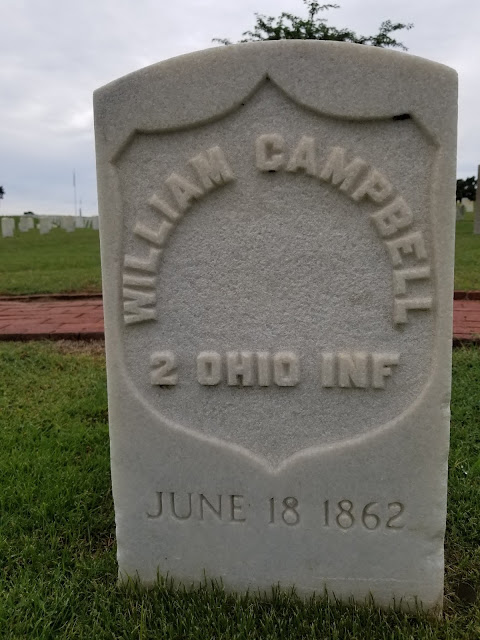
People my age may remember the Walt Disney movie The Great Locomotive Chase. If any historical event deserves a more in depth retelling by Hollywood it is this story. In the Spring of 1862 Union Brigadier General Ormsby Mitchell was camped with his army at Shelbyville Tennessee. Mitchell had his eye on capturing Chattanooga. The capture of Chattanooga would disrupt the Memphis and Charleston railroad and the fall of Chattanooga would open up the deep South to invasion. A black market trader named James Andrews devised a plan to go deep behind Confederate lines with a small group of volunteers. They would tear up and destroy the Western & Atlantic railroad along with the telegraph lines between Big Shanty Georgia and Chattanooga. If they could tear up the rails and bridges on the Western & Atlantic, along with cutting the telegraph lines, they could prevent the Confederate Army from shifting troops from Atlanta in order defend Chattanooga. Chattanooga would then be virtually defenseless and the Union Army could march right in. Ohio soldiers from Joshua Sills brigade were recruited for the mission. These were all volunteers who understood that they were about to travel two hundred miles behind enemy lines dressed in civilian clothes. They would pose as men from Kentucky wanting to join the Confederate Army. Their capture could mean certain death. Joshua Sill would be killed December 31, 1862 at Stones River. Fort Sill Oklahoma would be named for him by his friend Phillip Sheridan.
Ultimately Andrews group would grow to twenty four. Twenty two soldiers and two civilians. Andrews directed his men to travel in small groups to Chattanooga. From there they would all travel together to Marietta Georgia. Early on the morning of April 12, 1862 twenty two of the men boarded a northbound train for Chattanooga. Two men overslept and missed the raid. This was just five days after the bloody battle of Shiloh and the one year anniversary of the beginning of the war. The locomotive pulling the raiders train was named the General and Andrews plan was to hijack the train just north of Marietta at Big Shanty. This is present day Kennesaw Georgia. Big Shanty was chosen as the starting place because there was no telegraph there. Trains had no dining cars in those days so the passengers disembarked at the Big Shanty depot and walked next door to the Lacy hotel for breakfast. The raiders lingered behind and uncoupled the passenger cars from the rest of the train. William Knight became the engineer while most of the other men jumped into the three remaining boxcars. All that was left was the locomotive, tender, and three boxcars. Andrews gave the order to head north toward Chattanooga. All of this was accomplished with thousands of Confederate soldiers camped nearby. At that time the average speed of a train was about fifteen to twenty miles per hour. Northern Georgia is very hilly and even today trains average about forty miles per hour through that part of Georgia.
The men going in believed that the most dangerous part of their plan was stealing the train. If they could pull that off without getting caught they would be home free. They didn't count on anyone chasing them. When the Generals conductor William Fuller saw the train pulling off without him he and two others began chasing it on foot.The three men came across a hand car and used this until they spotted a locomotive at Etowah Georgia. The Andrews Raiders managed to tear up the track two miles below Adairsville. Fuller and his comrades could not go forward and were forced to continue the chase on foot again. Andrews bluffed the crew of the southbound locomotive Texas into pulling off on a siding so the General could pass. When Fuller reached the Texas he commandeered the locomotive and resumed the chase running backwards with the tender pointed north. At Calhoun he picked up eleven Confederate soldiers. By this time Andrew's pursuers were so close that the raiders had no time to stop and destroy more track. Tearing up a railroad is a slow process and they had not brought along the proper tools. Because of recent rains they were unable to burn the bridges because the wood was too wet. The raiders hoped to block the railroad tunnel at Tunnel Hill Georgia near Dalton but were unsuccessful. They had been able to tear down the telegraph lines along the way and to this point nobody had been able to warn the Confederate Army in Chattanooga of what was happening. Just before the raiders cut the telegraph lines north of Dalton, however; the Confederates were able to get a message off warning Chattanooga of the approach of the General.
Just 18 miles south of Chattanooga the General ran out of fuel and Andrews gave his men the order to scatter into nearby woods. Within two weeks all of the men were captured by the Confederates including the two men who overslept. The raiders were split into two groups and were imprisoned in Chattanooga, Knoxville and Atlanta at various times throughout the Spring of 1862.They were abused by hostile citizens, given little food, tortured, and imprisoned under terrible conditions. One group of prisoners were placed in a jail cell so small that they named it the "Hell Hole". On May 31, 1862 James Andrews was sentenced to death without the benefit of a trial and was hung a week later. Seven more men were tried and sentenced to death. They were hung in Atlanta on June 18, 1862 in front of a jeering crowd. Fortunately no more raiders would die after that. Shortly after the eight men were hanged eight others escaped and made their way back to Union lines. The rest of the men would eventually be released through prisoner exchanges. Of the twenty four men who participated in the raid nineteen men were awarded the Medal of Honor. James Andrews and William Campbell were ineligible for the medal because they were civilians. Sam Llewellyn of the 10th Ohio Regiment refused the medal because he didn't think that he deserved it since he overslept in Marietta and missed the raid. Two of the men who were hung, Perry Shadrack and George Wilson were somehow overlooked and did not receive the Medal of Honor.
This past June my wife and I took a vacation to Savannah and Charleston. On our way home we toured the tunnel at Tunnel Hill and the Chattanooga National Cemetery. This is where the eight executed raiders are buried. They are buried right behind the Andrews Raider monument. Five of the tombstones are etched in gold which means that they were awarded the Medal of Honor. Shadrack and Wilson's graves are not etched in gold. At the time I wondered why and after studying the Andrews Raid there is no valid reason why they didn't receive it. There has been a modern day effort to award these two men with the medal. Many people including descendants of the two men have tried to have the medal awarded to them over the years. Finally in 2008 the Department of Defense Authorization Bill requested that the president award the medal to them but it still hasn't happened. On March 25, 1863 Secretary of War Edwin Stanton asked the six raiders, who were released in the prisoner exchange, to come to the War Department. He was so inspired by their story that he awarded them all the Medal of Honor. These were the first Medals of Honor ever awarded and this is why March 25th is celebrated annually as National Medal Of Honor Day.
 |
| Connor, myself & Courtney visiting the General in Big Shanty Georgia |
 |
| The General |
 |
| Entering the tunnel |
 |
| An alcove inside the tunnel to protect workers as the trains passed |
 |
| The raiders view of the southern entrance of the tunnel |
 |
| The southern entrance of the tunnel |
 |
| The eight Andrews Raiders that were hung |




























Comments
Post a Comment